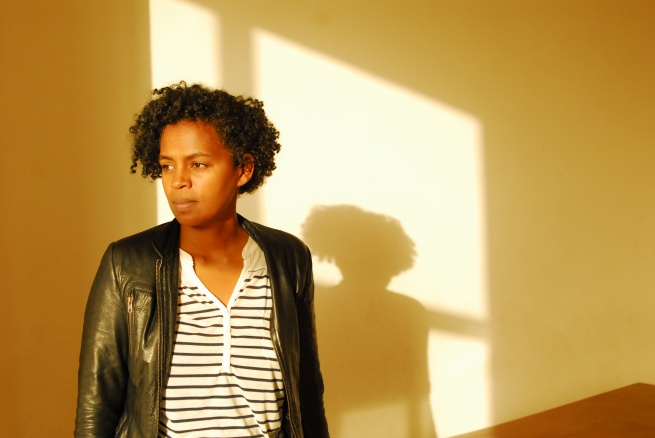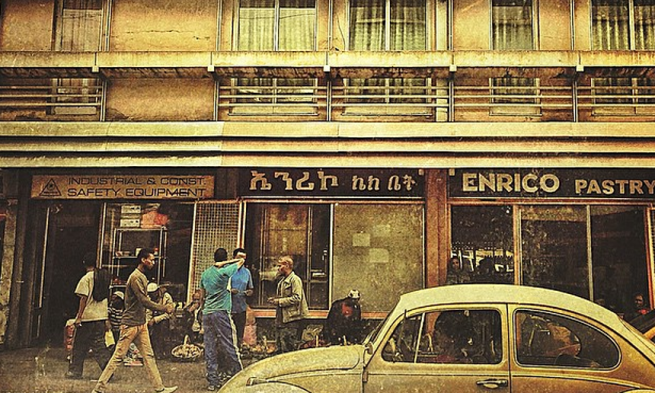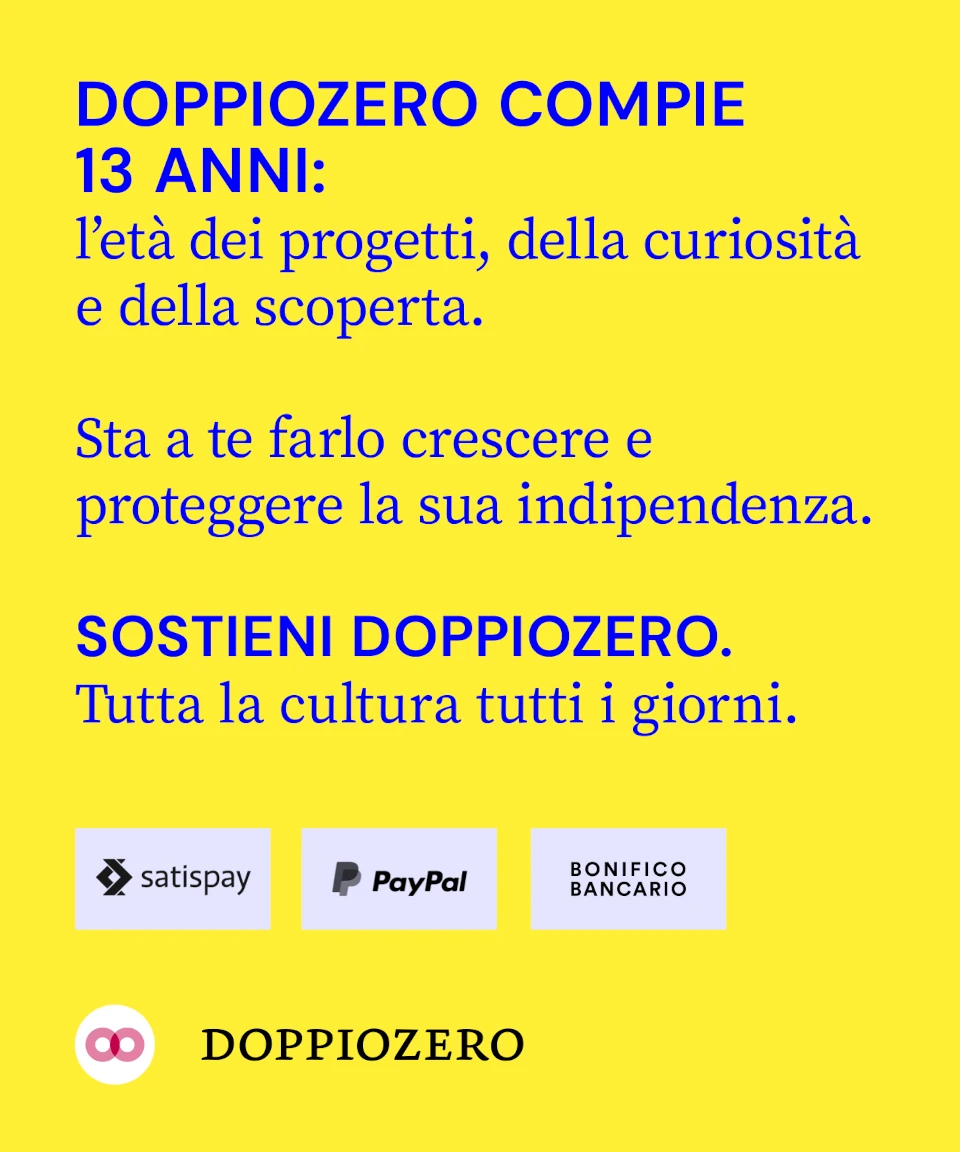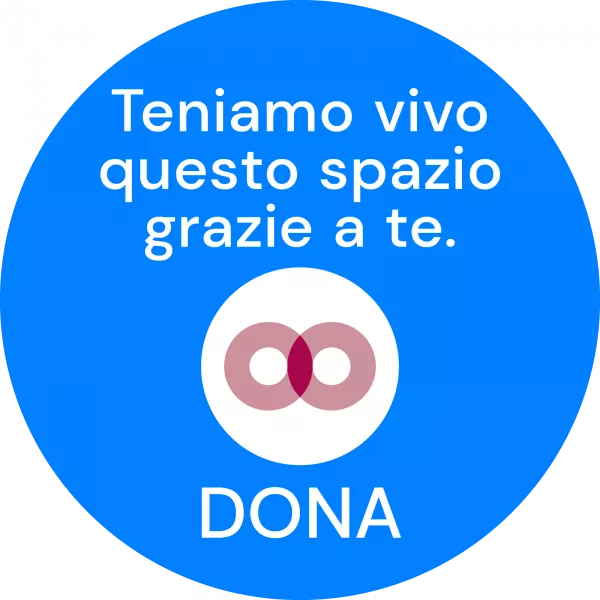Speciale
Visual Communication for Change
At the last Dak’Art Biennale in 2014 we met this young woman with a steady determined strong gaze, a confident way to carry herself, with the energy that contaminates you and makes you want to leave everything you are doing and march in the name of her cause. Her name is Aida Muluneh. And she has a most charming smile. A talented photographer, a cultural activist, a business woman, a mother and above all, an amazing human being. Every day in her native Addis Ababa she is doing something very important, gathering a community around her, stimulating young creative talents, inspiring them with her work and brick by brick trying to build a new image of Ethiopia through culture, art and education.
Aida’s artwork from The Divine Comedy exhibition curated by Simon Njami became the exhibition’s key iconic image, her work is constantly being exhibited at various international venues and her latest efforts brought 10 Ethiopian artists to the Photoville Festival that has just concluded in New York.
For us Aida is an inspiration that we want to share with you. Below is her story of a daily journey for change.
lettera27

Aida Muluneh, ph. Samuel Taye
“Visual Communication for Change”
by Aida Muluneh
The return to a place of birth is often filled with seeking the familiar, seeking to reconnect to a faded memory and more importantly seeking to belong. For those of us who have left our countries at an early age due to whatever circumstance, we often feel that we never belong here or there. Yet our identity is often linked to the distant place that we imagine through the stories of our parents, stories of a time and a country in the midst of change. As for myself, I spent most of my life in transition, never belonging to a place and not fitting into my surroundings. Yet the one consistent element in my travels has been my mother’s conviction to be a proud Ethiopian, in fact being able to speak my native tongue Amharic has been the greatest gift that she could have instilled in me, considering the fact that I left at the age of five. “You never know when Ethiopia will call you back, and when it does knowing Amharic will be your greatest asset”, my mother would advise me. Little did I know, she was absolutely right. My story is not only one of travel, but also one of a visual journey from which I have learned great lessons.
In 2007, after the Bamako Biennial, I decided that I would spend three months back in Ethiopia, yet 8 years later, I am still here like an anomaly. Just recently, an artist here in Addis Ababa said to me that it is a rarity for people to return and to stay here for good, particularly because the challenges are frequently discouraging. Each day, you must move forward and seek out the opportunities around you gaining strength in each victory. In a sense, you become the outsider: at times looking in and at times looking out on the possibilities of changing your surroundings. I have often been referred to as being ambitious or an idealist but I can’t see tomorrow without optimism or without having faith in the idea that if we stop dreaming we would all settle into a dangerously stagnant strain of contentment and purposelessness. In my humble beginnings I was raised to work hard and to exceed expectations in whatever I choose to do with my life. Hence, upon my arrival to Addis Ababa, I set out a goal to change the way the world perceives Ethiopian society and more importantly to share with other Ethiopian photographers the tools to surpass the global markets’ expectations of our visual wealth.
I must say my first year here was probably the most challenging for me. Most of the difficulty dealt with my body getting used to the air, the elevation, the food as well as the emotional hurdles of being in a place that was supposed to be home but leaving my support system behind in the West. To further complicate this year of adjustment, I had to leave behind my first son. Yet, just as in the beginning of any journey, we must all decide which risks are worth taking in order to follow a destiny that at times might question our very sanity. As for me, I wanted to lead a life with purpose. And that purpose was to change how Ethiopians see each other and how the world sees us through photography.
In 2008, I started teaching photography through small workshops at Addis Ababa University to a group of artists. The main objective was to show how closely related photography is to art and the fact that it is based on the same principles but with different tools. Since 2009 we have hosted and continue to host various workshops through my company Desta for Africa (DFA), and are currently working towards building an institution. These workshops have not only taught the students photographic skills, but they have also taught me lessons on how to build a program towards a self-sustainable platform. The main objective of the workshops is that if we want to change how the world sees us we must first establish our own visual language: with depth, proficiency and, more importantly, with our first- hand balanced story to tell the world.

Girma Berta, One of the oldest pastry shops in Addis Ababa. Girma Berta is one of the participants of the Photoville Festival, NYC, 2015
Yet, teaching photography was not enough to engage and inspire the Ethiopian audience and in 2010 I launched the Addis Foto Fest, the first international festival in East Africa featuring collections from around the world with portfolio reviews, screenings and conferences. It has been an event that has truly tested my strength but in each edition we strive to improve and also confront our challenges. Living and working in Ethiopia has taught me well the meaning of perseverance, and as the fastest growing country in Africa we must all make our contribution. In this sense, I often express the idea that culture should be part of development just like infrastructure, education and health. My goal was to organize a cultural event that would have an impact on a population that is a witness to the current changes in the country. Therefore, in the previous edition, our line-up featured 90 artists from 36 countries, with the philosophy that through photography we can all learn from each other. Forming global collaborations, such as the exhibition of ten photographers from Ethiopia at Photoville in New York, has created an opportunity for us to increase our visibility to the Western market.
Through each encounter working on creative productions, DFA has been, in a sense, like a Ph.D. in life filled with passion and excitement but also with tests. Yet, none of this would be possible without the hard work of the great team in my DFA office. In the course of the past five years, we have worked on training, documentations, book projects, exhibitions and organizing cultural events for various embassies and international institutions, all with an understanding that Ethiopia is changing, Africa is changing and the world is watching. Which means that the new generation is the light, which will guide us towards a future that reflects our ambitions not only for those within our borders, but for the entire African continent. We aspire to achieve this by creating a new visual language and working towards visual communication for change.
With the support of 









